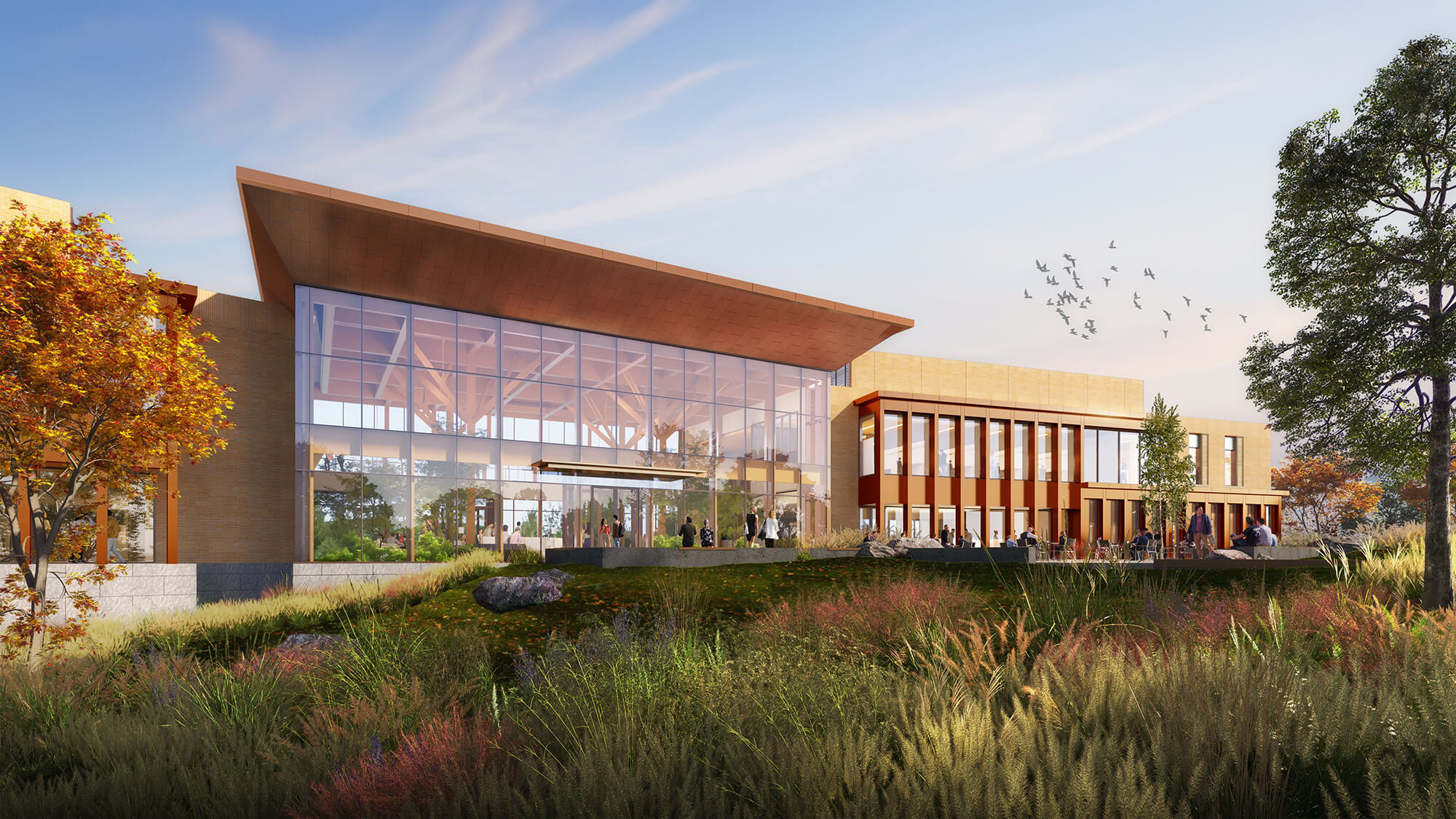Well before Herman Melville penned Moby Dick, seaside towns along the Massachusetts shoreline from Gloucester to New Bedford have provided kitchens with lobster, salmon, pike, bass, and other produce. Just south of Gloucester is Manchester-by-the-Sea, an old blue-collar town whose economy lives and dies by the fishing industry.
Today, the north shore of Massachusetts is diversifying its economy, as local officials try to attract tech companies from Boston. To that end, HGA has partnered with a biotech group, Cell Signaling Technology (CST), to transform a former gravel quarry in Manchester-by-the-Sea into a new, state-of-the-art corporate campus.
The site is located off Atwater Avenue in Manchester-by-the-Sea, adjacent to Brady Industrial Park. Renderings by HGA show a building whose volume mimics an existing granite outcropping on site with its terraces and materiality. Volumes will have a natural granite base with brick cladding, state-of-the-art curtain wall technology such as vacuum-insulated glazing (VIG), and a mass timber structure for a multipurpose lobby pavilion.
CST is a self-described life science discovery technology company and leading provider of antibodies, kits, and services. The master plan, architects at HGA offered, is what they call a “campus of the future” predicated on CST’s commitment to sustainability.
The design could set a new industry standard, HGA continued. By flipping an environmentally depleted site into a climate-friendly laboratory campus dedicated to reducing and eliminating fossil fuel consumption, the project could become a model for the approximately 450,000 brownfield sites in the U.S.
“This is an architect’s dream—to marry our design thinking and holistic approach with CST’s project aspirations while transforming an abandoned quarry into a new campus for life sciences research,” said Samir Srouji, an HGA principal. “This is a distinctive site that requires an exceptional landscape and architectural response to restore it, while also reflecting CST’s culture, care for community and planet, and important work at the highest levels of research and development.”

HGA leveraged the picturesque quarry cliffs as a key design feature. The designers elected to reuse and up-cycle the granite left on site from the cliffs as a central, campus-organizing element. This is meant to amplify and beautify the site’s scarred grounds, and connect CST employees and guests with their natural surroundings. In the future, a Quarry Garden and Upper Quad designed by Studio 2112 will provide an outdoor hub for workers connected to a network of trails around the site for the public to enjoy.
To achieve its net-zero goals, the campus will have onsite renewables and electrification; and heating, cooling, and hot water will be sourced from geothermal energy. The master plan also features a resilient stormwater management system to accommodate climate change.
“Achieving significant carbon reduction on a lab project of this scale requires collaboration and commitment from the owner and all design disciplines,” said Ariane Laxo, director of sustainability at HGA. “This project is setting a precedent in the science and technology market.”

